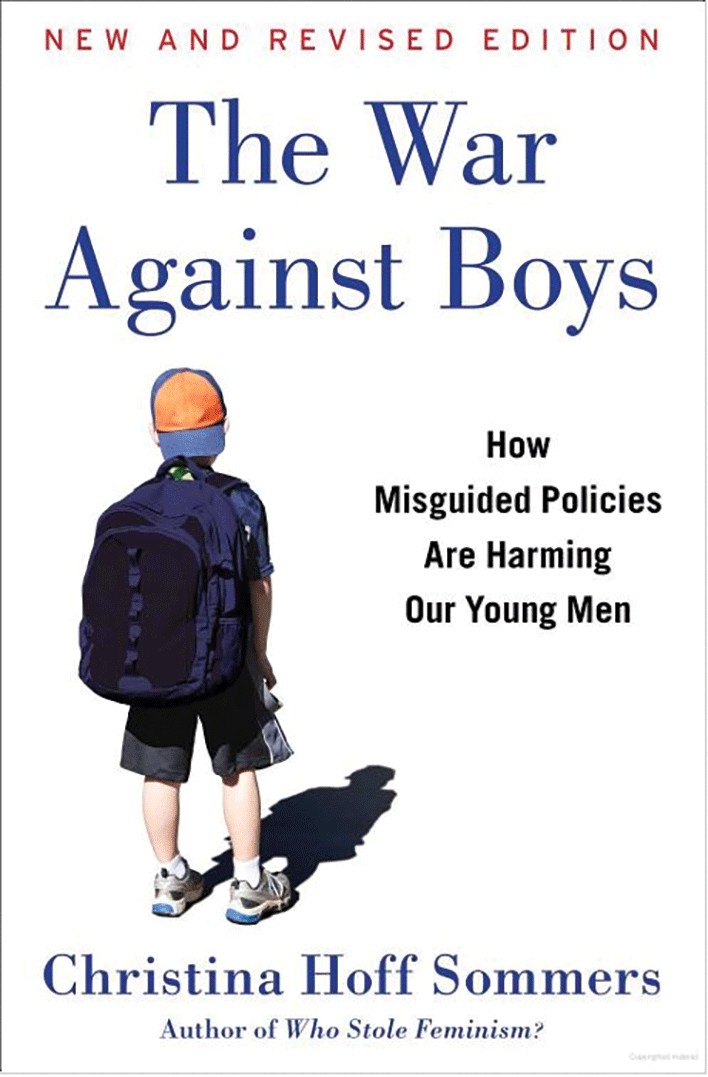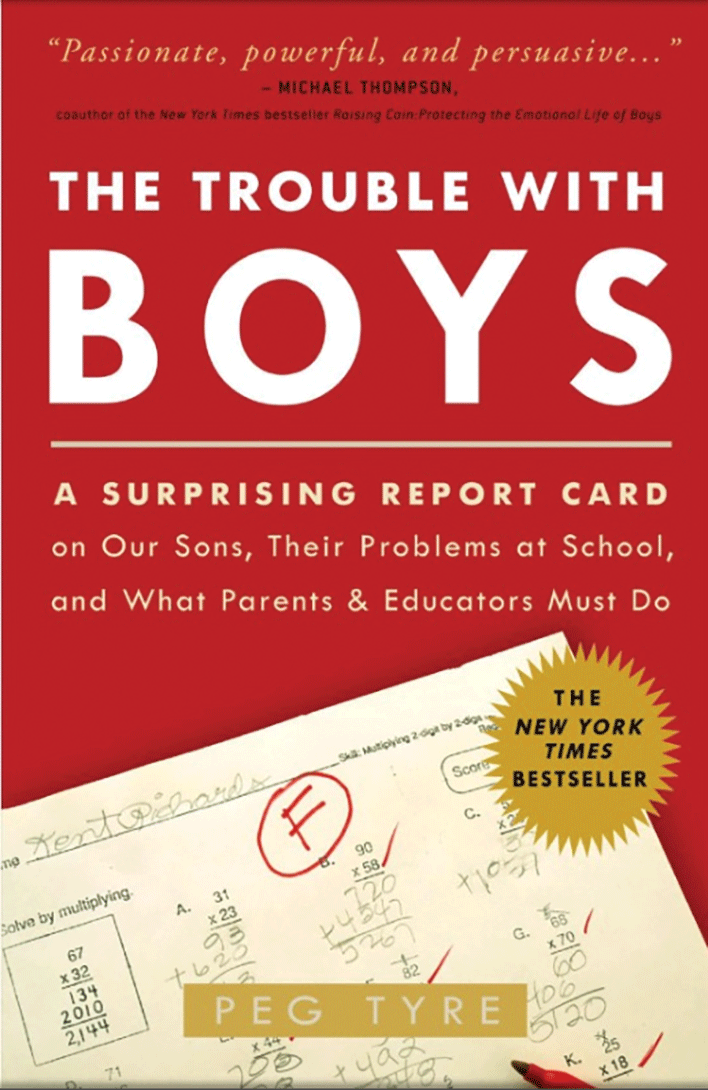The suggestion that men are becoming a “lesser ” can seem absurd in America, which has yet to elect a female president and where male CEOs head 95 percent of the top 500 companies. Yet the overwhelming male dominance in these and other areas masks a startling truth: The percentage of men thriving in school at all levels has declined significantly and continues on a disconcerting downward trend. Two books show us that this educational decay will mean worse things to come if we don’t restore excellence in the schooling of both sexes.

In a recently updated version of The War Against Boys, Christina Hoff Sommers warns against unintentionally privileging girls in education. A resident American Enterprise Institute scholar, “equity feminist,” and former philosophy professor, Sommers published the original edition of her book in 2001. At that time she was one of very few noting the plight of boys in the modern American classroom, but the problem has since been more widely recognized. A lively debate has sprung up in books, essays, and editorials over the drooping trajectory of boys, as well as the struggles of young males entering adulthood.
Despite this, Sommers argues in the new edition, little progress has been made in improving the fate of boys in school today. This problem is not unique to the United States, but the national inaction is. Great Britain and Australia have recognized and confronted their “boy crises,” calling for greater emphasis on purposefully-structured classrooms, physically active learning opportunities, male teachers and role models, and targeted efforts to improve phonics and engage male students in reading.
Playing the role of skeptical reporter, Sommers scrutinizes assertions of bias against female students by “women’s lobby” organizations, including the American Association of University Women, the Ms. Foundation, and the National Women’s Law Center. Exposing faulty assumptions and research, she claims the crisis of underserved girls is more smoke than fire, noting that female students have matched and surpassed their male peers in many categories and that the success of one gender need not come at the expense of another. She asserts that flawed studies, anecdotal evidence, and unfounded declarations underlie several “expert findings.”
For those seeking a less confrontational take on boys’ educational woes, Peg Tyre’s The Trouble with Boys provides an interesting read. The book, which grew out of her eponymous Newsweek cover story in 2006, offers the sort of window into the psyche and development of boys that only a journalist can provide. A series of stitched vignettes, The Trouble with Boys explores in compelling narrative the modern circumstances that diminish and sometimes defeat young men.
Tyre’s book carries less zeal and, contra Sommers, doesn’t place significant blame on the feminist movement for the current state of male achievement, but makes it clear that boys’ academic struggles are real. She urges wise readers to recognize the educational crisis facing boys and discuss the issue in ways that address the struggles of both sexes.

There are few easy solutions to widespread male underperformance, as Tyre acknowledges again and again when exploring various experiments to improve achievement. Single-sex schooling, for example, enjoys vocal support among proponents, but has demonstrated relatively modest academic advantages. (Though according to her research, single-sex education does increase the likelihood that a boy or girl will study subjects traditionally seen as more apt for the opposite sex.) Tyre generally discounts wholesale solutions, such as reorganizing schools, and looks for change on a classroom by classroom basis, with teachers crafting more engaging lesson plans, administrators reinstituting outdoor recess, and schools allowing for greater movement during the day. Some of her ideas require systemic change, such as increasing the number of male teachers, while others simply call for an adjustment of mindset—for instance, training educators not to misinterpret a boy’s gruff exterior for disrespect or lack of interest in academic subjects.
In The War Against Boys, Sommers also proposes remedies for what ails male students that thoughtful donors may wish to consider. Rigorous back-to-basics schools, character education programs, and hands-on lessons are all suggested as ways to help male students thrive. These can be cultivated on a local basis and need not await some national movement.
Both Tyre and Sommers have a knack for exposing the faulty assumptions that can produce untoward social effects. Philanthropists dismayed by the declining academic state of boys should dig into the meaty stories in Tyre’s narrative, and the sharp data in Sommers’s volume. In both places they will find a powerful challenge to the educational status quo.
